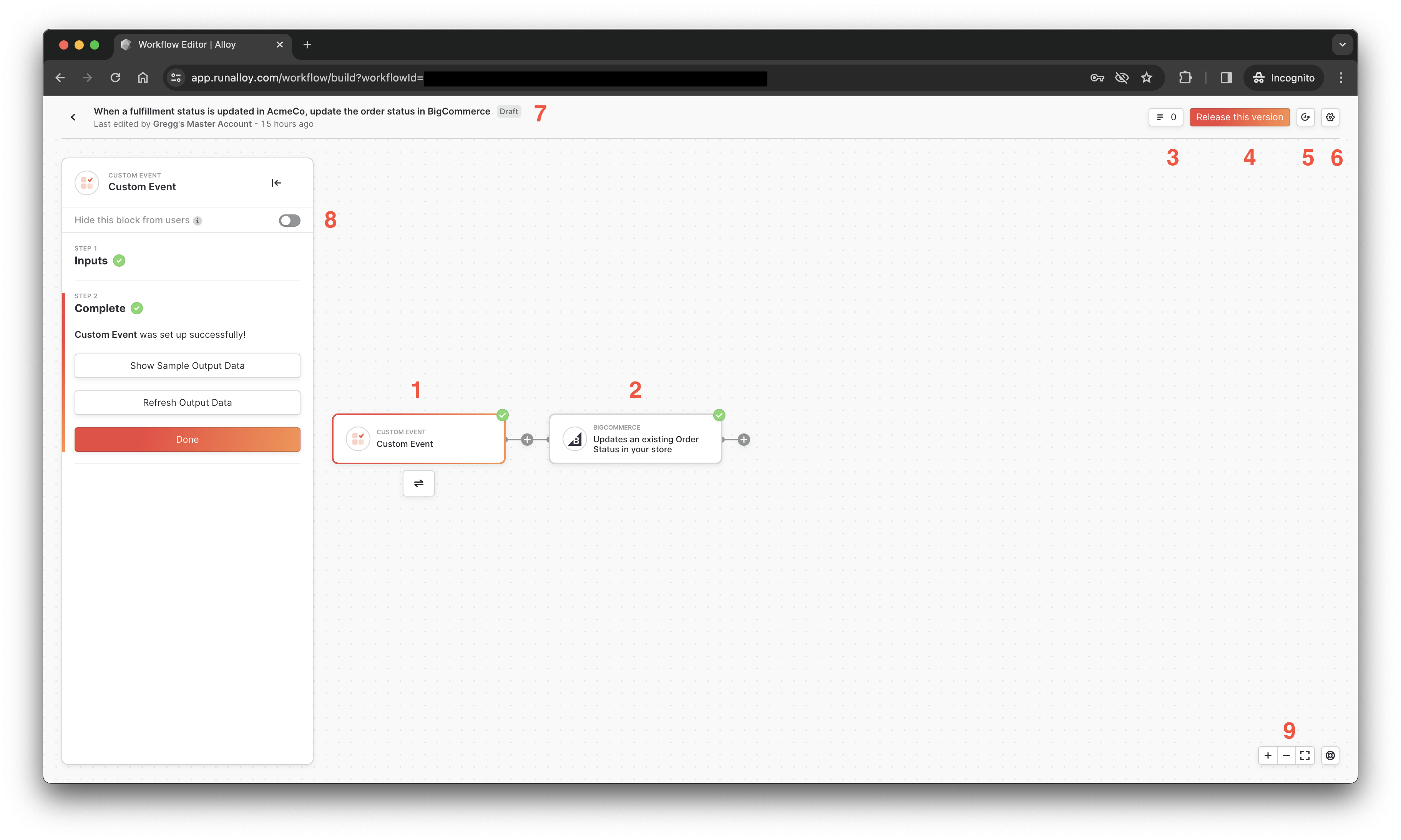Workflow Builder
Learn how to navigate the Alloy Workflow Builder like a pro.
Overview
In this article, we'll take a brief look at the ins and outs of the Alloy Workflow Builder so you can navigate it like a pro.
Workflow Basics
Take a look at the image below. Below you can find descriptions for each of the features displayed here:
- Event: The right block in the workflow is always known as the event block. This block triggers off the workflow based on specific criteria. In this example, the event block is a Custom Event.
- Destination: While you can only have one event block per workflow, you can have as many destination blocks as you'd like. Destination blocks specify where the data from the proceeding block(s) should be sent.
- Workflow Logs: The workflow logs button opens a panel that reveals all workflow logs (both success and failed). This is a useful tool for debugging errors.
- Release this Version: This button is used to publish a workflow change to your users. It is only enabled when a workflow does not have any validation errors.
- Version History: This button shows all versions associated with a workflow. By default it will show Version 1 as a draft until you publish the first version.
- Settings: The settings button reveals a window where you can configure certain workflow-specific settings like description, etc.
- Title: The workflow title allows you to specify a unique name for each workflow. The badge next to the title indicates if the workflow is a draft or released.
- Hide block from users: This toggle allows you to hide a block from your end users. Commonly used when the destination is a data warehouse (in which case you wouldn't want to prompt the user to authenticate).
- Workflow Navigation & Help Center: These buttons allow you to zoom in and out of a workflow. Commonly used for large, complex workflows that require a bird's eye view. To the right is the help center where you can find links to our docs and support center.

Wrapping Up
In this article, we took a look at the Alloy Workflow Builder and the various components that comprise it.
Updated 4 months ago
